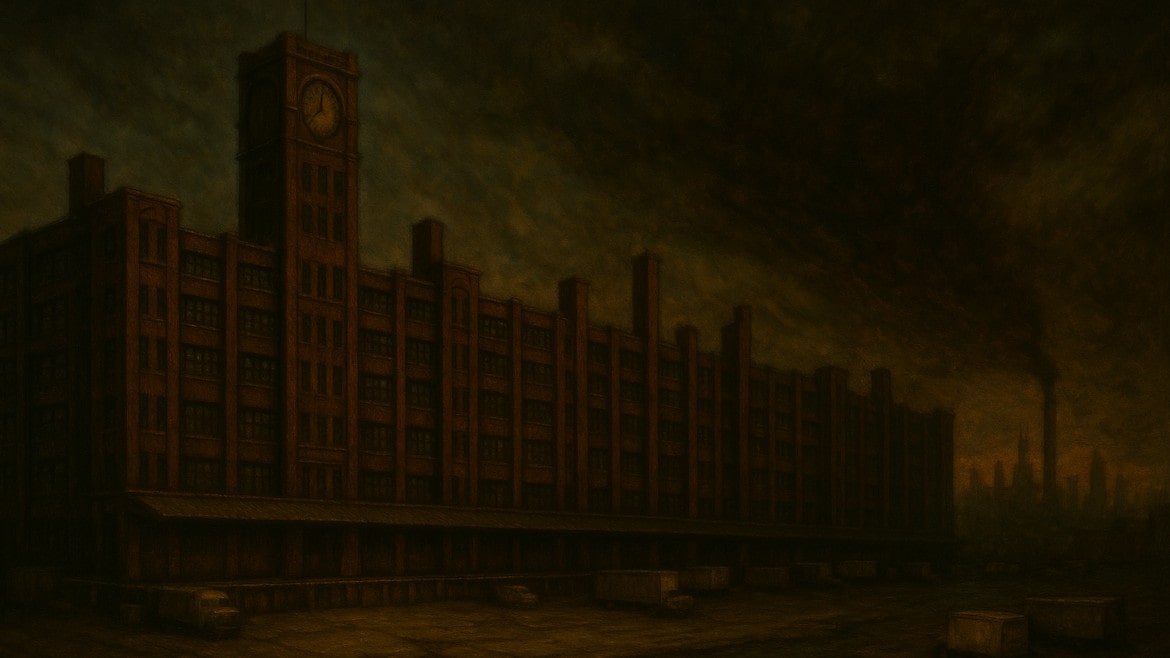“The trains don’t stop, the factories don’t sleep, and the shadows here don’t like to be watched. McKinley Park’s got grit—and secrets baked into the bricks.”
Sitting snug between Bridgeport and the old Stockyards, McKinley Park is Chicago’s tired but stubborn heart. The neighborhood grew up on sweat and steel—freight lines, factories, and the throb of heavy industry. While the postwar boom gave other areas a facelift, McKinley just kept working: smog, smokestacks, and families used to getting by with grit under their nails. In 1953, it’s a patchwork of union men, second-gen immigrants, and newcomers looking for steady labor and cheaper rent.
The park itself is a strange breath of fresh air. Thirty-seven acres of green, ballfields, and benches where kids learn to scrap and old men play chess like it’s a blood sport. But the canal running through the neighborhood stinks like old metal, and the closer you get to the switching yards, the weirder things get. Some say something’s nested in the old brickyard tunnels. Others say it’s just the heat. No one says it out loud—but the Veil hums here.
Neighborhoods
Ashland Belt
Following the tracks from Pershing down to Archer, the Ashland Belt is all business—auto shops, freight yards, and warehouses stacked three deep. At night, it's quiet… too quiet. Old men say the train whistles here don't echo right. Street crews make cash running numbers or ghost-shipping things that shouldn’t move.
Canal Row
Cramped houses and tight alleys wind along the Sanitary & Ship Canal. Kids fish in oily water, and strange folks rent the rowhouses closest to the waterline. Sometimes boats go missing. Sometimes folks do too. The older Polish and Lithuanian women keep wards by their doors. They don’t explain them.
Notes
The McKinley Park brickyard closed in ‘47—rumor says the tunnels beneath were never mapped right.
A Crown Sons lieutenant went missing here in ‘52. They still torch the occasional garage in retaliation.
The local pool freezes late and thaws early. Always.
Trains running past midnight sometimes carry cars that aren’t on any manifest.
The McKinley Park Veil Watch chapter meets at a shuttered VFW—membership is “by grief or by favor.”
The pigeons in the park flock oddly—always facing east after sundown.
Tommy Lucchesi’s uncle ran booze here during Prohibition; folks say his stash still turns up now and then.
A boy named Mikey Lasko vanished in ‘49. Returned in ‘53. Didn’t age a day.
You don’t move to McKinley for charm. You move here to work, to sweat, and maybe to hide. But Veil-thin nights bring whispers from the canal, and some alleys don’t forgive trespass.
| Wealth |
|
| Security & Safety |
|
| Criminal Influence |
|
| Occult Influence |
|
| Polish American |
30% |
| Lithuanian American |
25% |
| Mexican American |
20% |
| Irish American |
15% |
| Other (Czech, Slovak, Italian, etc.) |
10% |
|
South Side
|
|
Southwest Side
|
McKinley Park
Real-World and Civic Landmarks:
McKinley Park – The namesake green space with a lagoon, baseball fields, and a fieldhouse that doubles as a polling site and community hub.
Riverside Industries Complex – A sprawl of old factories, mostly metalwork and canning, some now half-abandoned or leased for storage.
St. Michael’s Parish – An aging brick church that holds together a fraying Catholic community, rumored to be protected by older rites.
Central State Bank Branch – A low-rise bank that’s been robbed four times since ’47 and somehow always stays open.
Ashland Streetcar Depot – Streetcars still run from here during peak hours; its underground section is off-limits, “due to rats.”
46th Ward Office – A squat municipal building, mostly paper-pushers, but locals whisper about strange visitors and late-night meetings.
McKinley Park – Criminal & Vice Locations:
The Soot Club – A low-slung tavern near the railyards where workers, racketeers, and fence crews all drink without asking questions.
Kowalczyk Ironworks (Back Shed) – What looks like a scrap metal facility doubles as a forge for black market weapons and stolen goods.
Ray’s Lucky Paper Co. – A lottery front disguised as a printshop; stacks of fake forms and doctored union badges in back.
McKinley Park – Veil Locations:
The Hollow Pit – A collapsed foundation site near the canal that glows faintly at night; even the rats avoid it.
Loomer’s Lot – A fenced gravel yard with rusted farm equipment, known for odd echoes and a hunched figure seen during storms.
“Stairwell Sixteen” – A sealed stairwell in the Ashland Depot’s old maintenance wing; opens into the wrong number of floors.




Comments